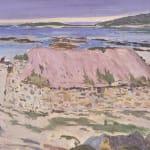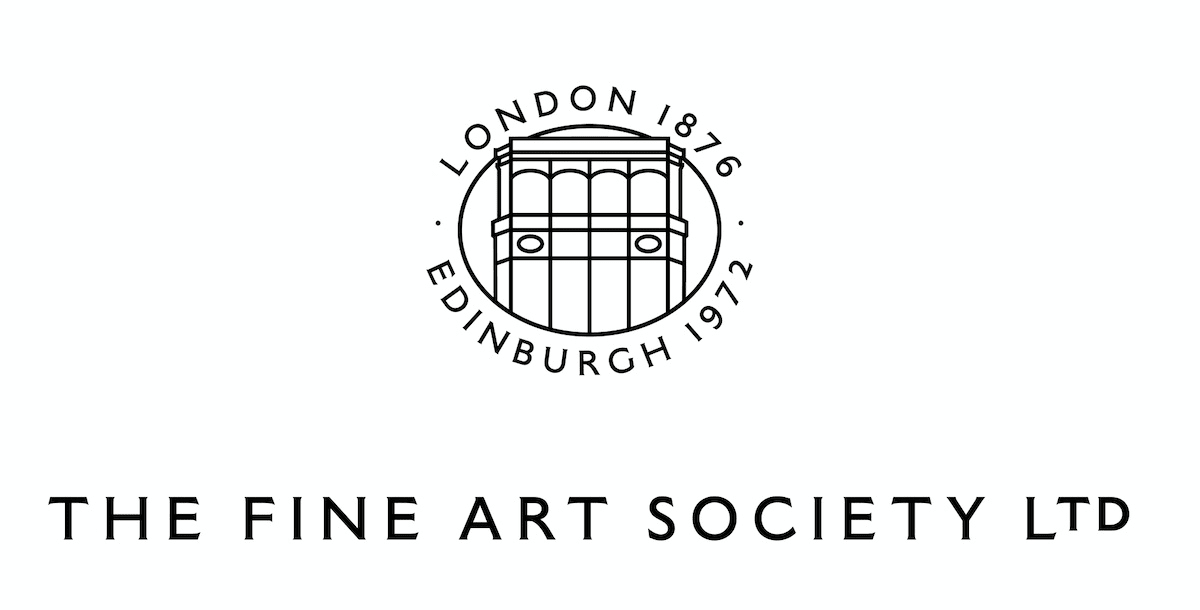


John Duncan RSA RSW 1866-1945
Eriskay
signed
oil on board
14 ¼ x 17 ¼ inches
Further images
Duncan’s interest in history, legends and mythology was apparent from the beginning. He is known as the foremost painter of the Celtic Revival. Whilst early in his painting career he...
Duncan’s interest in history, legends and mythology was apparent from the beginning. He is known as the foremost painter of the Celtic Revival. Whilst early in his painting career he drew on Arthurian legend Duncan later applied himself to Celtic myths based on Patrick Geddes’ philosophy to use art as a tool for a strong national tradition. While the Symbolist movement was probably his most important source of inspiration, Duncan’s paintings were instilled with the spirit of the Italian Renaissance, and he spent much of his life experimenting with various compositions of tempera.
After returning from Chicago in 1903, the singer and teacher Marjory Kennedy-Fraser found Duncan to be “fired in the ambition to master Gaelic and to steep himself in the atmosphere of Celticism”. Duncan was aware that Kennedy-Fraser wanted to do original research in Celtic music and in 1905 he persuaded her to join him on a visit (he first visited in 1904). Duncan introduced her to a girl, Mary McInnes, who sang the songs of the island to her. This venture was the beginning of Kennedy-Fraser’s most important work: collecting the songs of Eriskay, Barra and other Hebridean islands.
Eriskay was important for Duncan too, removing him from the distractions of city life and allowed him to pursue his many ideas. Whilst he is best known for his mythological paintings, he also painted landscape. This painting is taken from the southern shore of South Uist between Glendale and Ludag. It overlooks the Sound of Eriskay with the north-eastern tip and beaches of the island of Eriskay just visible. Duncan has perfectly captured the subtle colouring of this Hebridean shoreline. Low light peeks from beneath cloud cover on the horizon and an air of stillness pervades.
After returning from Chicago in 1903, the singer and teacher Marjory Kennedy-Fraser found Duncan to be “fired in the ambition to master Gaelic and to steep himself in the atmosphere of Celticism”. Duncan was aware that Kennedy-Fraser wanted to do original research in Celtic music and in 1905 he persuaded her to join him on a visit (he first visited in 1904). Duncan introduced her to a girl, Mary McInnes, who sang the songs of the island to her. This venture was the beginning of Kennedy-Fraser’s most important work: collecting the songs of Eriskay, Barra and other Hebridean islands.
Eriskay was important for Duncan too, removing him from the distractions of city life and allowed him to pursue his many ideas. Whilst he is best known for his mythological paintings, he also painted landscape. This painting is taken from the southern shore of South Uist between Glendale and Ludag. It overlooks the Sound of Eriskay with the north-eastern tip and beaches of the island of Eriskay just visible. Duncan has perfectly captured the subtle colouring of this Hebridean shoreline. Low light peeks from beneath cloud cover on the horizon and an air of stillness pervades.
Join our mailing list
* denotes required fields
We will process the personal data you have supplied to communicate with you in accordance with our Privacy Policy. You can unsubscribe or change your preferences at any time by clicking the link in our emails.



